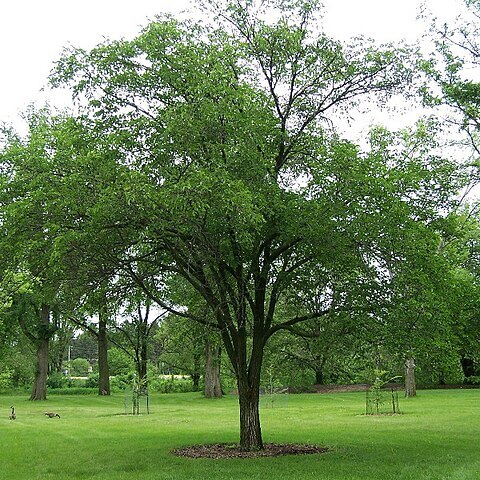Shrubs or trees, to 20 m tall, d.b.h. to 40 cm, deciduous. Bark gray to blackish gray, longitudinally fissured. Branchlets tan to red-brown, sometimes with corky wings, glabrous or sparsely pubescent when young, with scattered lenticels. Winter buds dark brown, sometimes hoary from pubescence, ovoid-orbicular to ± globose; bud scales ± pubescent, margin prominently long ciliate. Petiole 2-14 mm, pubescent; leaf blade broadly obovate, obovate-orbicular, obovate-rhombic, or obovate, 4-11 × 3.5-6 cm, leathery, margin obtusely doubly or simply serrate; secondary veins 6-16 on each side of midvein. Inflorescences fascicled cymes on second year branchlets or scattered at base of new branchlets. Flowers from floral buds or mixed buds. Perianth campanulate, 5-lobed, pubescent or not, margin ciliate. Samaras tan to light brown, rarely slightly orange-brown, broadly obovate-orbicular, ± orbicular, or broadly elliptic, 1.5-4.7 × 1-3.9 cm; perianth persistent. Seed at center of samara. Fl. Mar-May, fr. Apr-Jun.
More
A large shrub. It grows 9 m high and spreads 6 m wide. The young stems are downy. They later have corky bark. The leaves have teeth. The tips of the leaves is pointed. The leaves are downy underneath. The fruit are large and bristly and have notches.


